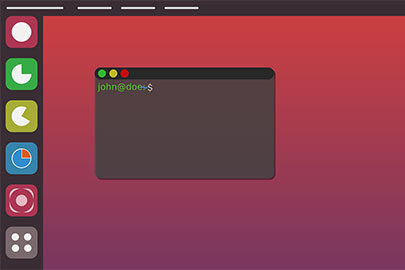What’s the Difference Between IP Address and URL?
Whether on the Internet or on a smaller network, the use of an address is required to connect to the right site or the right machine.
But it’s not always obvious what the exact term should be used to define it
This is why, in this article, I will explain to you the two main addresses used in computing: IP and URL.
What’s the difference between an IP address and a URL?
An IP address is an identifier, unique on a specific network, to access a computer or other connected devices.
A URL address, allow the access to a specific resource on a web server. It’s often a domain name followed by the page name.
So, there are a few common points between both, and it’s a bit complicated.
That’s why I will explain everything in the following of this post.
IP Address
Definition
An IP address is a series of numbers that identifies which particular computer or network is connected to the internet. IP is an abbreviation for ‘Internet Protocol’.
Collins Dictionary
Cool, but not sure that this definition helps you a lot.
I’ll explain the format later, but the principle is that an IP address allows computers to exchange data between them.
As an analogy, think to a phone number.
If you want to call someone, you’ll dial a unique number, that’s to say its phone number.

The IP address is the same thing on a computer network. Each computer has a unique IP address once connected to the network.
This IP address can be fixed or change regularly. So, computers are often exchanging information on IP addresses updates (same thing as when you change your phone number).
On your network at home, in the Internet router that do this, updating IP addresses and sending the new information to the other computers on the network.
Note: I only wrote about computers, but any device connected on the network has an IP address (your computer, printer, smartphone, tablet, etc.)
Format
An IP address format look like this: AAA.BBB.CCC.DDD
It’s a sequence of digits only, they are all between 001 and 255.
In general, most used formats at home or in a small network are 192.168.1.DDD and 192.168.0.DDD.
So, you have 250 addresses you can use on the network, which is more than enough for most family.
In a company, networks are often bigger, by merging several sub-networks of 254 IPs (by using a different network mask for those who are interested).
Usage
So, on local networks, you generally have the same IP addresses range.
On Internet, servers and Internet routers are often on the same network, and they use an IP address in the same format.
In this case, each device will use a worldwide unique identifier in this format.
Even if the number of IP addresses allowed is close to 4 billions, it’s no longer enough to allocate IP to everyone.
A new IP address format has been created to solve this problem (IPV6).
An IPv6 address is composed of 8 sequences from 4 hexadecimal characters. This should be enough to generate almost an infinity of addresses.
Examples
To close this first part about the IP Address, let’s check a few examples, to give you a better idea of the format:
- Your Internet router: 192.168.1.1
- The IP address of my computer: 192.168.1.22
- A Google server: 216.58.201.227
- This website IP address: 92.222.88.59
I hope it’s clearer for you now 🙂
URL Address
Definition
A URL is an address that shows where a particular page can be found on the World Wide Web. URL is an abbreviation for ‘Uniform Resource Locator’.
Collins Dictionary
This definition is easier to understand. In general, the URL is created from four elements:
- Location: identifier from the server that host the website, so the IP address we have seen previously.
- Protocol: transport method, on the web it’s mainly HTTP or HTTPS, but URL are not limited to these protocols (example: you can have a URL for an FTP server).
- Host name: rather than using the IP address, we’ll use a domain name, easier to remember for the end user (there is an equivalence between the domain name and the IP address, but I will explain that in another article).
- Path: the path tells which page to load on the server. A website can have thousands of pages, so it’s important to specify which one you want to read (ex: https://alldifferences.com/difference-ip-address-url/)
Format
Once we know these different components, let’s see the generic format for an URL:
PROTOCOL + DOMAIN NAME + PATH

That’s simply these mandatory elements, and in this order, to access a web page.
The protocol tells directly the transport method for the information, then the domain name is here to go on the good server, and finally the path to load the page you want.
Examples
To illustrate what we just say, here are a few examples:
- https://alldifferences.com/difference-ip-address-url/
Protocol: HTTPS
Domain name: alldifferences.com
Path: /difference-ip-address-url/ - https://www.google.com/
The www at the beginning is not mandatory, but the webmaster can choose this format if wanted.
The path can also be elementary (here it’s just “/”), when we go to the home page - ftp://ftp.hp.com/pub/
FTP is another protocol that you might see sometimes
It’s mainly used for file downloads (in this example, it’s to download some HP drivers).
There are other possibilities, but you already understood the concept.
The HTTP protocol should disappear in a short future on the Internet because it’s not secure, and the trends is that almost any website use HTTPS now, even for static content.
Usage
You probably use URL every day, so I’m sure you already know when URL are used 🙂
But to sum up, a URL address allows you to visit a specific resource on Internet, with a specific protocol.
Differences between IP and URL address
Format
An IP address uses a raw format, with numbers and points (123.123.123.123).
A URL address can be composed of an IP address, but you always have several elements: protocol, IP or domain name, and path (http://123.123.123.123/file.html)
Usage
IP addresses are mostly used to identify a specific machine on a network. Any device will use one: network devices, computers, smartphones, etc.
It’s mainly used by network administrators, and not so much by end users.
The URL address is the one you are using all the time on Internet to access any website. You can also use some at home, for example to access your Internet router.
Conclusion
You now know a lot more about the difference between an IP address and a URL.
Obviously, this is just the basics, and implications a bigger than that, but I hope that this post helped you to understand.
If it’s the case, feel free to share it on your favorite social network!






